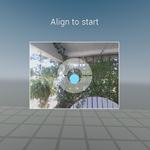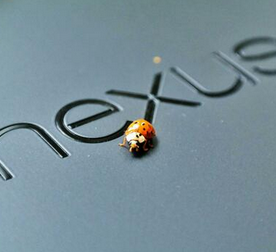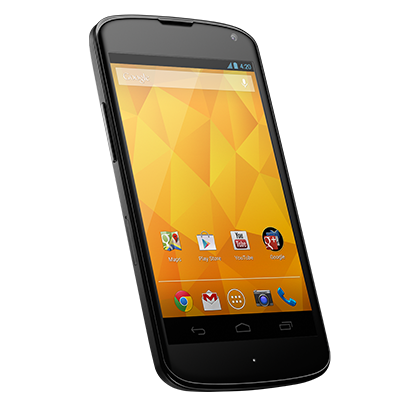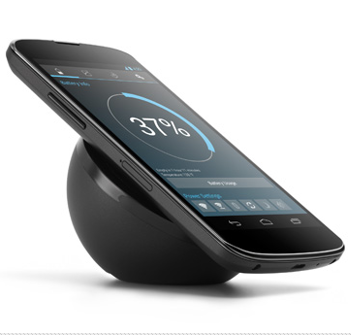
Cody Toombs
Senior Reviewer
Contributing since February, 2013
-
1511articles
-
1389News
-
12Features
-
1Lists
-
7Guides
-
37Reviews
-
65Deals
Page 71
About Cody Toombs
Cody has been writing with Android Police for ten years. While best known for the hundreds of APK Teardowns and breaking news on many of Google’s new products and services, he also covers deeper technical topics about the inner workings of Android, app development, and security. Cody is a software engineer and consultant with two decades of experience developing mobile and enterprise applications. In addition to writing, Cody is a regular podcaster and has made appearances on CNN, All About Android, and Tech News Today. Cody is also an active photographer and videographer, occasional gamer, and an all-around decent human.
What tech products or categories are you most passionate about?
Cameras and smartphones for photography. New technologies are bringing a lot of interesting things capabilities to the worlds of photography and video.
What was your first phone and what do you remember about it?
My true first phone was some old Motorola candybar phone from before the days of smartphones. I started on smartphones with the Cingular 2125 (a rebrand of the HTC Faraday, I think?)
Latest Articles

Adobe Updates AIR To v3.9, Introduces Support For Multi-Threading, XXHDPI Icons, And Background Tasks For Apps Running In Direct Render Mode

Flash may have died a slow and agonizing death on Android, but it did not depart without leaving its heir apparent. Adobe's lighter-weight successor was built to better handle touchscreen interfaces, lower power processors, and to support applications living independently from a web browser. While the platform hasn't been a high-flying success on Android or iOS, it does play host to a few popular games like Machinarium. Exactly three years and one day after first appearing on the Android Market, Air has been updated to v3.9 and now includes support for multi-threading, background tasks, and xxhdpi icons.

DashNotifier For DashClock Reaches The Play Store, Uses Android 4.3 NotificationListener Service To Show Notifications From Any Application

If your device runs a fairly stock version of Android, there's a good chance you've got DashClock set up front-and-center as a lockscreen widget or somewhere on your home screen. While we receive seemingly endless notifications throughout the day, relatively few applications provide support for DashClock to display that information. This is where DashNotifier comes in. It leverages the NotificationListener service added in Android 4.3 to read and display notifications from selected applications as if they had provided extensions of their own. After about a month of development on XDA, DashNotifier is now available on the Google Play Store.

[Security] Vulnerability In Firefox For Android Discovered That Allows Hackers To Steal Files From The SD Card And Firefox's Privately Stored Data [Update]

The security of our mobile apps and private data is a very serious matter. This is particularly true for high value targets like web browsers, which often store login credentials that can be used to access many of the websites we use on a regular basis. Unfortunately, browsers are also very complicated applications with an extensive set of features that are difficult to lock down completely. Sebastián Guerrero Selma of viaForensics recently posted a video demonstrating a newly discovered vulnerability in Firefox for Android which would allow hackers to access both the contents of the SD card and the browser's private data. Take a look at the video:

SanDisk Connect Wireless Media Drive And Flash Drive Review: Solving The Right Problem In The Wrong Way

Expandable storage seems to be dying off in Android. The excuses reasons are varied, but the writing seems to be on the wall. Of course, each time a new flagship rolls off the line sans microSD slot, fans cry out in frustration. SanDisk is taking on the challenge of making an accessory meant to bring expandable storage to any device. The result is called SanDisk Connect, a pair of portable drives with Wi-Fi that your phone or tablet can connect to for file storage or content streaming. To keep you connected to the internet, they can also connect to a wireless access point at the same time. The Wireless Media Drive and Wireless Flash Drive work quite well, but not without a potentially crushing limitation. I really liked using them, but they aren't going to work for a lot of the things you may want to do with them.left: Media Drive, right: Flash Drive

Focal Camera App Removed From CyanogenMod As Its Developer Xplodwild Leaves The Team - First Fallout From Incorporating

Not long ago CyanogenMod Nemesis Phase 1 was announced, spearheaded by a brand new camera app called Focal. It garnered quite a bit of excitement and demonstrated just how far the open source project had come. Unfortunately, one week shy of its 2 month anniversary, Focal has been officially removed from the ROM and isn't likely to make a return.

PwnMyMoto Roots And Bypasses Write Protection On Moto X, Droid Ultra, Mini, And Maxx, Makes Flashing Custom ROMs A Reality

That didn't take long. Just 2 days after Justin Case released a root method for the Moto X, Droid Ultra, Droid Mini, and Droid Maxx, he's already back with a hack that bypasses write protection. By disabling the write protection afforded by the bootloader, it becomes possible to flash 3rd-party ROMs, themes, and other mods. In other words, the flood gates are open for the modding community.

Since Dan Rosenberg declared his intentions to stop publishing exploits for Motorola devices, fans of the OEM have been wondering if there will be much of a future within the modding community. While the distant future is still very foggy, Justin Case has come to the rescue with his own rooting method for Motorola's latest salvo of devices. His simple-to-use app roots the Moto X, Ultra, Mini, and Maxx.

[Security] Firefox For Android Can Be Tricked Into Automatically Downloading And Executing Malicious Code

A very serious security hole has been discovered in Firefox for Android that allows a website to force the browser to download and run potentially damaging files, usually without the user's knowledge or interaction. The vulnerability was first described and demonstrated publicly on September 9th as part of a posting meant to advertise the attack as being for sale. The method for exploiting the weakness simply requires a webserver to instruct Firefox for Android to initiate a download, after which the downloaded file is automatically opened or executed (depending on the file type).

Samsung Announces Improved Multi-Processing Technology For Exynos 5 Octa, Can Run Up To 8 Cores Like A Boss

Since Samsung announced the Exynos 5 Octa at CES 2013, one major criticism has been leveled at its implementation of big.Little technology time and again: for some reason, it has only ever been able to run 4 of its 8 cores at a time. Not only that, but it has never been able to mix-and-match the higher performance A15 cores with power efficient A7 cores to get the best possible configuration for performance and power usage. Effectively, the Exynos 5 Octa acted like a quad core processor with the ability to toggle between two different architectures. That situation will be changing shortly as Samsung prepares to launch Heterogeneous Multi-Processing (HMP) for the Octa in Q4, making it possible to run any number of cores in any configuration.

Galaxy Note 3 Will Debut New Radio Power Management System, Uses 20% Less Power And 30% Less Heat Than Existing Tech

A great thing about new flagship phones is that they usually come packed to the brim with new technologies we can get excited about. The Galaxy Note 3, announced a few days ago, is no exception. While Samsung made a point of featuring Category 4 LTE with Carrier Aggregation, which can achieve 150 Mbps, the company neglected to mention the Note 3 also includes the Qualcomm QFE1100 chipset which should significantly reduce power consumption and heat associated with the LTE radio.

SuperSU Updated To v1.60, Compatible With Samsung's Latest Galaxy S 4 Firmwares With KNOX

These days, it seems like everybody is trying to make Android more secure. As usual, rooting and modding are often casualties of this effort. Just over a month ago Android 4.3 broke the existing model for root, forcing updates to existing methods, and now Samsung is rolling out updated Android 4.2.2 firmwares for the Galaxy S 4 which fully enable the company's heavily secured KNOX environment. Fortunately, Chainfire is already on top of it and has updated his popular root software, SuperSU, to be compatible with the new system.

[Bug Watch] Geotagging Photospheres In Android 4.3 Is Mono-Linguistic, Doesn't Work Without English

Every version of Android has launched with at least one headlining feature. As any true fan would know, the 4.2 camera brought with it a very cool new mode called Photospheres. While the initial hype has dropped off, the popularity of photospheres still continues to grow, thanks in part to improvements in image quality and the addition of a Maps-based community designated for sharing the immersive images. We don't always want a location attached to our regular pictures, but it's pretty rare when we don't want our photospheres to be geotagged. After all, they are usually taken in public, wide-open spaces. Unfortunately, since updating to Android 4.3, quite a few people have found their photospheres lack geotagged coordinates.

[Bug Watch] 2013 Nexus 7's Touchscreen Issues Persist, Even Worsened, On Some Units After JSS15Q "Fixed" Them

It has only been a couple of weeks since I wrote about the troubles with multi-touch (well, touch in general) on the 2013 Nexus 7. At the time, Paul Wilcox of Google's Product Support forum stated that the issue was being examined, and about a week later he confirmed that the JSS15Q update addressed the problem. While many people are reporting that the OTA has completely cleared up any touchscreen glitches that had been present, some people haven't seen any improvements, and still others are complaining that the problem has grown significantly worse.

Autodesk Launches Maya LT, Targets Indie And Mobile Game Developers With Monthly Licensing Plans

Today, Autodesk announced Maya LT, a streamlined 3D modeling tool targeted at independent and mobile game developers. The maker of AutoCAD and 3ds Max is looking to make a splash with developers by introducing a lower-cost version of its Maya software, but still keeping it equipped with powerful animation tools, including a skeleton generator with the capability to calculate inverse kinematics (using Autodesk HumanIK), and a viewport preview system to visualize models as they would appear in game with full lighting and texture effects. Just watching the video makes the software look like a lot of fun to play with, which seems like an important quality when building games.

[Bug Watch] Android 4.3 Radio Bugs Causing Cell Connection Drops On Some Nexus 4 Handsets, Fixes In Sight

Losing the cellular connection on your phone, even briefly, can be a potentially serious issue. It might come at the moment you need to call for emergency services, or when somebody is trying to call you. Today, we're going to talk about a pair of issues on the Nexus 4 that can send it into radio silence for as little as a few seconds, or as long as it takes for you to notice it.

[Developer Changelog] AOSP Updated With The Latest Round Of 4.3 Fixes, Including Both JWR66Y (4.3_r1.1) and JSS15Q (4.3_r2.2)

Updates are rolling out to Nexus devices as we speak, but the public changelogs seem to only call for improvements to "Security." However, the latest round of commits just went up on the Android Open Source Project, bringing everything up to date with both JWR66Y (4.3_r1.1), which is going out to most Nexus devices, and JSS15Q (4.3_r2.2), which is destined for the 2013 Nexus 7. Thanks to Google's gracious sharing of the source code, we can comb through each and every little detail of what's new.

Chromecast Updated To Build 12940 With Stability/Discovery Enhancements, Google Cast SDK Bumped To v1.0.1

The Chrome team is pushing out an update to all the good little Chromecasts of the world. This one doesn't come with any changes to the UI or new features, but it does promise to improve the stability for Google Play Movies playback, and should make Chromecast devices discoverable on more networks. You won't need to do anything to get this installed on your end, the OTA will automatically download and install when it's your turn.

[Bug Watch] Wireless Charging May Be Responsible For Keeping Your Nexus 4 Awake Indefinitely

Wireless charging is perhaps one of the best examples of true convenience. The simple act of setting your phone down meant its battery would begin refilling. No need to hunt for the end of a cable, no more time spent clumsily aligning plugs, and no more hassle with loose cords. When the Nexus 4 was announced, its stylish charging orb was supposed to spearhead a movement of wireless bliss. While the orb certainly had its advantages, it was a bit late to launch and carried a premium price. Nevertheless, Qi-compatible chargers began to find a home with Nexus 4 owners. Unfortunately, the update to Android 4.2.2 brought with it a wakelock bug that could seriously eat away at the battery life of Google's flagship phone after it had charged wirelessly.

[Update: Fix In Place] Serious Security Hole Discovered In Cerberus Anti Theft, Gives Attackers Near-Total Access To Your Phone, Fix In The Works

When it comes right down to it, few things are much scarier than finding out somebody can track your movements, read your call log and text messages, and even record audio and take pictures of whatever the phone can get, all without your knowledge. Here's the thing - as careful, security-conscious people, many of us already install software like that for our own purposes, usually to recover a phone in the event it should fall into the hands of thieves. Like a weapon intended for protection, sometimes our best defenses can be turned against us.

[Bug Watch] Android 4.3 May Be Having Trouble Automatically Reconnecting To Wi-Fi Networks

If there is one thing we all eventually rely on with mobile devices, it's having a sturdy Wi-Fi connection. Whether it's because of a low data cap, you live or work somewhere with a weak cell signal, or like me, the local cellular technology is stuck in the stone age, you probably have a few wireless networks saved on your phone or tablet. While you probably take it for granted that your devices will automatically connect to these networks when they are in range, some people are finding that feature hasn't been working as expected since upgrading to Android 4.3.
